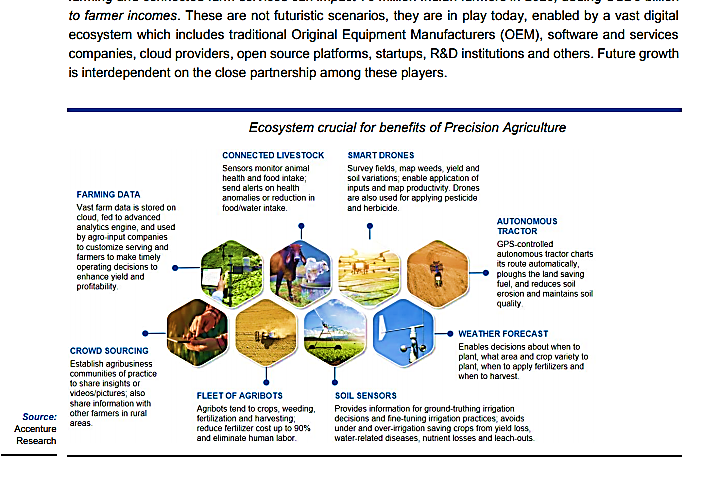Centre To Undertake Study With IBM To Use AI In Agriculture
- 03 Jul 2019
- On 3rd July, 2019, Ministry of Agriculture and Farmers Welfare signed a Statement of Intent (SoI) for undertaking a pilot study with IBM India.
- It will be launched in the three districts of Bhopal, Rajkot and Nanded in the States of Madhya Pradesh, Gujarat and Maharashtra respectively.
- As part of the collaboration, IBM’s Watson Decision Platform (WDM) for Agriculture will be leveraged to obtain farm level weather forecast and village level soil moisture in three districts.
Actions Sought under SoI:
- WDM will give solution in the field of agriculture through Artificial Intelligence (AI) and weather technology at village level/ farm level.
- It will provide information on weather forecast and soil moisture on pro bono basis to aid farmers in taking decisions regarding water and crop management for finer production and productivity.

Benefits of AI in AgricultureSoil Health Monitoring and Restoration
Crop Health Monitoring and Providing Real Time Action Advisories to Farmers
Increasing Efficiency of Farm Mechanization
Increasing the Share of Price Realisation to Producers
Helps in Determining the Best Crop Choice
Automated Irrigation and Water Management
|
Challenges for AI in India:
Lack of Expertise:
- Owing to the age-old inept curricula adhered in most of the educational institutes in India, there’s a deficiency of appropriate talent to raise and deploy AI systems at scale.
Low Awareness of AI
- Low awareness of AI for resolving business problems in most public enterprises and government agencies, especially given the scarcity of AI professionals, is obstructing adoption. Most of the public enterprises and government agencies find the technology unreliable and, hence, refrain from adopting it for their businesses.
Lack of Adequate Computing Infrastructure
- Unreasonable price and little availability of computer infrastructure have made the development and deployment of AI systems difficult. For example, although swiftly growing, the cloud infrastructure in India not as capable as that followed by developed countries.
- Lack of infrastructure0 has led to many Indian AI startups to incorporate their business outside the country, which makes AI outside the reach of Indian researchers in government labs and many industries.
Concentration of Power
- It is difficult for new entrants to deliver tailor made services that can compete with data rich incumbents such as Facebook or Google. This phenomenon results in the creation of a virtuous cycle which reinforces the hegemony of the big few, creating a huge entry barrier for startups.
Impact of the Decision:
- Ensuring Better Productivity: It will help the farmers to take decisions regarding water and crop management for better production and productivity.
- Boosting Farmer’s Income: It will help in fulfilling government's assurance to bring digital technologies in helping the farmers to increase their income and transform Indian agriculture.


